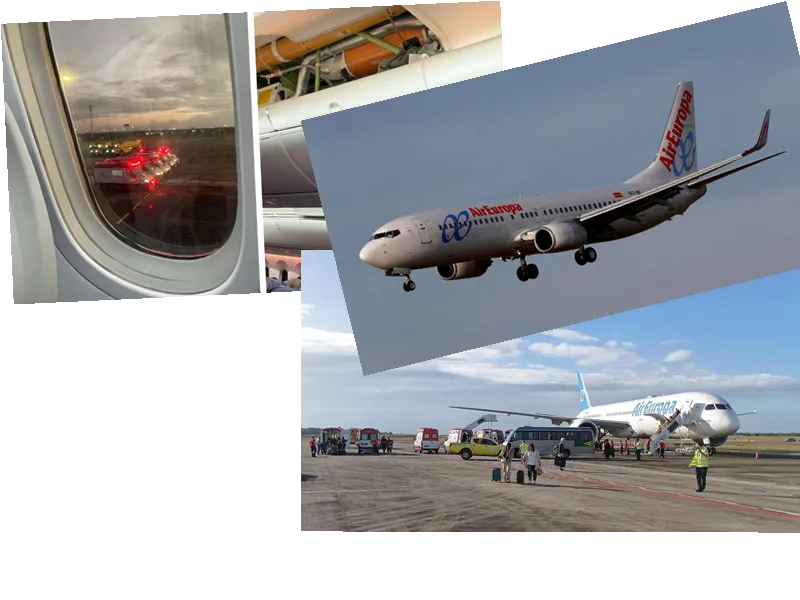An Air Europa Boeing 787-9 Dreamliner, en route from Madrid to Montevideo, encountered severe turbulence, forcing an emergency landing in Natal, Brazil. The incident occurred early Monday morning, resulting in numerous injuries among the 325 passengers on board. About 40 passengers, hailing from various countries including Spain, Uruguay, Israel, Germany, and Bolivia, were treated for injuries ranging from minor bruises to more severe fractures.
The turbulence struck suddenly, causing passengers not wearing seatbelts to be thrown around the cabin. Some passengers reported hitting the ceiling, leading to significant injuries. An X user shared images of the cabin's damage, showing broken ceiling panels and exposed pipes. The plane landed safely at 2:42 a.m. local time, with ambulances ready to transport the injured to nearby hospitals.
Air Europa confirmed that Natal airport was chosen for the emergency landing as it could quickly accommodate passengers with medical needs. Most of the injured were treated and released, but a few remained hospitalized for further observation. The airline arranged for uninjured passengers to be transported to Recife, where they would continue their journey to Montevideo.
This incident adds to a growing list of turbulence-related emergencies, with experts pointing to climate change as a contributing factor. Research indicates that higher temperatures and changes in wind speed at high altitudes have led to a significant increase in turbulence. From 1979 to 2020, the frequency of severe turbulence incidents has risen by 55%, making air travel increasingly unpredictable and dangerous.
- Passengers described the turbulence as a terrifying experience, with some fearing for their lives. Claudio Fernandez Arbes, a Uruguayan psychologist, recounted how a passenger suffered a heart attack and another broke her hip during the ordeal. Other passengers reported fractures and severe bruises, highlighting the severity of the incident.
- Air Europa faced criticism from passengers for its handling of the situation, with complaints about poor communication and delays in providing assistance. The airline has since stated that the plane will undergo a thorough inspection to assess the damage before it can return to service.
- This event underscores the growing concern over the impact of climate change on aviation safety. Scientists have noted a marked increase in turbulence incidents, attributing it to the rising global temperatures and altered wind patterns. As the climate crisis continues to evolve, the aviation industry may need to adapt to these new challenges to ensure passenger safety.






